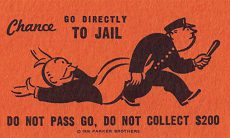LinkedIn is starting to look – and act – a lot more like Facebook and Twitter. With 175 million users, it’s certainly not up to the “1 billion” scale of Facebook. But adults are a lot more comfortable in its professional environment. Now that you can share news and updates – and group discussions are gaining traction – could LinkedIn change the social networking landscape?
Somewhere in early 2005, I started to receive my first connection requests for something called “LinkedIn.” They were mixed in with similar requests for Plaxo. At first, I was skeptical. I’d never heard of this service, and the first connection requests were from people I’d met only once or twice. I signed up anyway and connected because that’s what early adopters do.
Before long, I started to view LinkedIn as a reasonable substitute for my address book in Outlook. Indeed, when I switched jobs a year and a half ago, I downloaded my contacts from my work laptop, but never bothered to open the file. If I need someone’s email, I visit his or her LinkedIn profile.
Shortly after I joined this professional network, colleagues to whom I’d sent connection requests often questioned me in person. They were uncomfortable creating an account on LinkedIn and distrustful of sharing their work email and phone numbers. Among their concerns were loss of privacy and the uncertainty of connecting with strangers. Ironically, less than two years later, people were creating profiles on Facebook with gusto. LinkedIn got less attention.
Recently, though, I’ve been noticing a shift in attitude. Somewhere in the last couple of years, LinkedIn turned a corner in both credibility and growth. There are reasonable explanations: the economic downturn, Facebook’s assault on privacy, the blurring line between work and personal. LinkedIn’s reputation as a network for professionals suddenly took on new importance.
The company solidified this reputation by targeting recruiters and HR professionals for subscriptions to solutions that assist in hiring. (Other revenue streams include B2B marketing and jobseekers.) A survey last year from the Society for Human Resource Management said that 95% of hiring managers who use social media are using LinkedIn to find and evaluate candidates. That’s a huge incentive for jobseekers.
In the last year or so, the company has made the network easier to use and more sticky – the kind of site you want to visit daily. The latest enhancements have taken a page from both Twitter and Facebook. Why do I think these updates are a potential game change? It’s purely anecdotal, but people in my own network began using recommendations and following thought leaders immediately, and the take up has continued at a healthy rate.
But there’s one other reason – again purely anecdotal. I’ve had several dozen conversations over the last couple of years with clients, B2B professionals, recruiters, and HR representatives about social media and how it can be used for marketing. Without exception, every one has told me that they think Twitter has a limited audience (and usually not theirs), that Facebook is too personal (even for B2C marketers), and that the only social network they really trust for business is LinkedIn. Whether they’re right or not doesn’t really matter. It’s the perception that counts.
Here’s a look at some LinkedIn features, old and new, and why they matter.
Follow thought leaders. Similar to Facebook subscriptions, you can now follow 150 thought leaders handpicked by LinkedIn who will write long-formed blog posts. What’s unique is that these posts are original content, designed specifically for the LinkedIn audience. It’s something that neither Facebook nor Twitter have and offers the potential of attracting a more engaged audience.
Endorsements. Introduced just a couple of weeks ago, this feature allows you to endorse a colleague’s skills with just a single click. Let’s say your colleague is a wiz at Web design. You’ve been meaning to write a recommendation, but you never seem to have the time to give it its due. Endorsements allow you to say something about performance, in under a minute. The day after this feature launched, endorsements consumed my update feed.
New company pages. Companies can now enhance their LinkedIn pages with a cover photo, and more changes are promised. There are more than 2 million active company profiles on LinkedIn, which people can follow. This is extremely valuable for B2B marketers for whom Facebook is often not the right audience and Twitter too scattershot.
Groups. While groups are not new, they have grown decidedly more active. LinkedIn automatically pushes conversations to your email (you can adjust your settings for less frequent intervals). People are increasingly engaging in groups, and because of that, I find them more valuable.
Updates. LinkedIn’s home page displays the latest connections as well as status updates of people in your network. This used to be all about who was connected to whom, something I only cared to visit once every few weeks. But status updates have changed that. Now, there’s enough sharing of must-read professional content that I check at least once a day for information that I might find useful in my job.
LinkedIn Today. Customized to my interests, this feature has proven to be remarkable accurate in finding articles that I need to read. Like Updates, I check it every day.
So, will LinkedIn someday destroy Facebook? I doubt it. The end of oversharing is likely to be the biggest threat to Facebook’s longevity. For now, each network occupies its own special niche for usefulness, and LinkedIn’s best bet is to stay professional.






